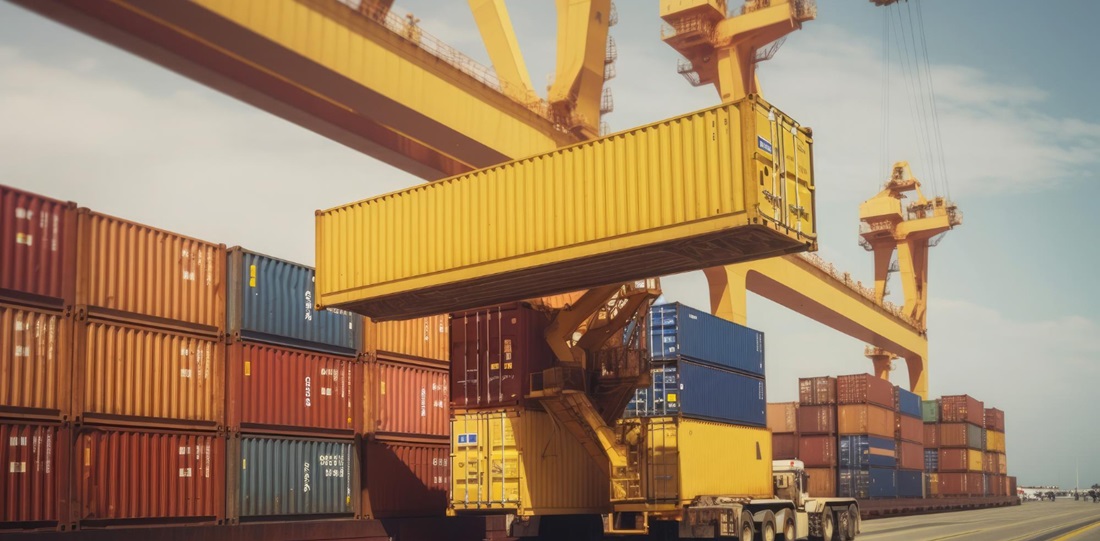
Global Trade Outlook for 2024: A Projection Amidst Rising Tensions
Apr, 17, 2024 Posted by Gabriel MalheirosWeek 202416
In April, before the aggravation of the conflict between Iran and Israel, the World Trade Organization (WTO) estimated a 2.6% increase in global trade volume in 2024, following a 1.2% decline in 2023, influenced by weak performance in Europe. However, the WTO highlighted uncertainties looming over world trade, particularly regarding the unfavorable scenario for negotiations aimed at ending the war in Ukraine and the conflict between Israel and Hamas.
These current circumstances, assessed on Wednesday, the 17th, by the Getulio Vargas Foundation, are influencing commodity prices and affecting global logistics, especially in the Suez Canal. The high probability of sustained high interest rates in the United States could lead to lower economic growth in the country, while there are serious doubts about China attaining the 5% growth announced by the government. These last two factors impact global demand for imports.
In 2023, while world trade volume declined, Brazil’s export volume grew by 8.6%, and imports registered a 2.2% decrease. Drought in Argentina, crop problems in the United States, and China’s recovery explained the country’s good export performance. For 2024, the Ibre model released in March estimated a 2% increase in export volume and a 1.2% increase in imports, close to WTO projections.
CONFLICT
What changes after the escalation of the Middle East conflict? For Brazil’s foreign trade, unless there is an escalation of conflicts involving major powers, the supply of commodities, especially oil, could benefit from possible price increases. High interest rates in the United States tend to devalue the Brazilian currency along with domestic factors such as fiscal issues, among others. In this case, inflationary pressures are not welcome, but for the trade balance, the effect would be positive.
There is no consensus on China’s performance for 2024. However, signs of improvement in the Chinese economy have led several experts and institutes to begin to accept the Chinese government’s projection of 5% for 2024 as viable. Brazil’s export agenda to China is concentrated on three products.
In the first quarter of 2024, these products accounted for 77% of exports to China – soybeans (31%); iron ore (23%); and oil (23%). Even with a slower growth pace at around 4%, a surplus is guaranteed. All these considerations assume that the conflict will not spread worldwide.
BALANCE
After two consecutive months of record surpluses, the trade balance for March 2024, valued at US$7.5 billion, was lower than in March 2023. However, in the first quarter comparison, the US$19.1 billion surplus in 2024 was the highest in history.
There was a slowdown and/or decline in trade volumes in March. In the case of exports, which grew by 19.7% (January) and 20.6% (February) in the year-on-year monthly comparison between 2023 and 2024, there was a 9.6% decline in March. Import volume followed a similar trend: 11.2% (January), 12.4% (February), and deceleration to 1.6% in March.
Prices followed the downward trend observed since the beginning of the year, falling by 5.6% for exports and 8.5% for imports. With these results, the value exported in March, compared to the same period in 2023, fell by 14.8%; and imports, by 7.1%. However, the variation in export value in the quarter is positive.
Commodities, which explained 70% of exports in March, recorded a 7.7% decline in export volume, and non-commodities, a 14.2% decline, compared to March 2023. Commodity prices fell on a monthly and quarterly basis, but in terms of volume, commodities grew by 14.4% between the first quarters of 2023 and 2024.
Import volume and prices of commodities declined in the year-on-year comparison for March and the first quarter of 2023 and 2024. Non-commodity volumes increased by 10.3% between quarters and 2.9% between March 2023 and 2024.
In the first two months of the year, the export volume of agriculture and extractive industries was in double digits. The year-on-year comparison between 2023 and 2024 shows an increase of 35.7% and 39.3% in January, and 26.9% and 58.5% in February, for agriculture and extraction, respectively. In March, the result changed.
The agricultural and extractive industries’ performance is linked to the declining export performance in March. When comparing March of 2023 and 2024 year over year, there was a negative variation in the value of -20.8% due to a decline in both volume (-5.1%) and prices (-20.5%) in the agriculture sector. According to the Balance, the decline was primarily caused by soybean exports, which accounted for 19.3% of Brazil’s total exports in March and decreased by 23.1% in price and 4.6 in volume.
Source: Guaíba
Click here to read the original piece: https://guaiba.com.br/2024/04/17/exportacoes-para-a-china-crescem-491-no-bimestre-diz-fgv-2/
-
Oct, 04, 2023
0
Pecém Port eyes electrolyzers to produce green hydrogen
-
Ports and Terminals
Oct, 21, 2021
0
Santos privatization to reduce shipping tariff by 30%
-
Trade Regulations
Dec, 20, 2023
0
Brazil begins to reassess Mercosur tariff review
-
Ports and Terminals
Apr, 20, 2021
0
Brazilian port container imports up 11.2% in the first two months


